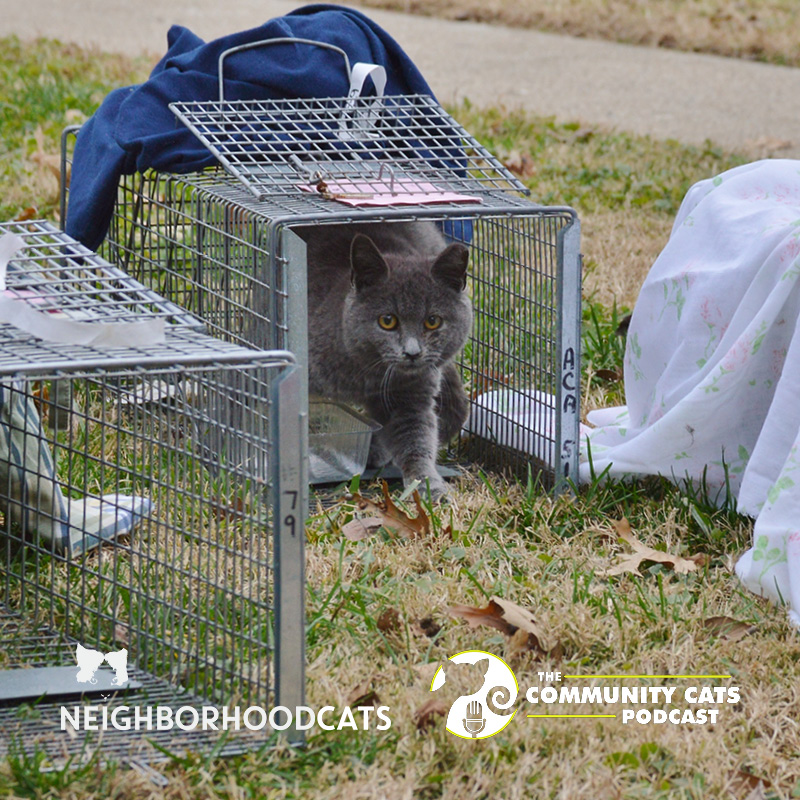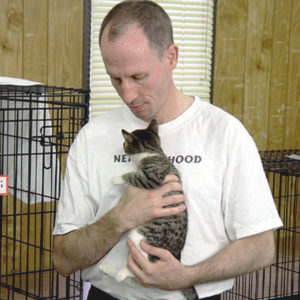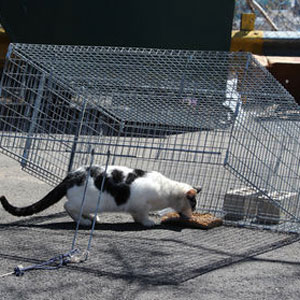
Interview! Elena Battles, Shelterluv
March 2, 2019
Interview! Kim Saunders, Operations Director, Liberty Humane Society
March 9, 2019
 This week, we have the next installment of our occasional series called Trapper Tips & Tricks, which will profile folks who are involved in trapping community cats. This week we interview Bryan Kortis, co-founder and National Programs Director of Neighborhood Cats, a leading community cat advocacy group with hands-on programs in New York City, New Jersey, and Maui.
This week, we have the next installment of our occasional series called Trapper Tips & Tricks, which will profile folks who are involved in trapping community cats. This week we interview Bryan Kortis, co-founder and National Programs Director of Neighborhood Cats, a leading community cat advocacy group with hands-on programs in New York City, New Jersey, and Maui.
If you have tips and tricks you’d like to share, or know of someone we should consider profiling, please email Stacy.
Why did you become a trapper?
Out of necessity. There were feral cats all over my neighborhood and I wanted to try to help them. I didn’t really even know what a “feral” cat was, but I did know none of them were going to let me pick them up and put them in a carrier. So a trapper was born!
 Tell us about your first trapping experience.
Tell us about your first trapping experience.
My very first time trapping I was totally clueless. The project was led by a long-time rescuer and the goal, believe it or not, was to capture and then find homes for all thirty cats living in the inner courtyards of a city block. The rescuer set out six traps with bait and bang! bang! bang! we had six cats within like two minutes. Thank God she didn’t have more traps, because it was all downhill from there. The captives ranged in age from 3 to 8 months old and it wasn’t long before I did learn what “feral” meant. All the foster homes we had lined up quickly fell apart when they discovered the kittens were wild and I had to scramble like mad to get these guys safely placed. That’s when I came up with what has since been my enduring mantra: think before you trap.
Why do you support TNR?
I’ve always been interested in the big picture and reaching the day when we don’t have millions of cats living on our streets. I also care about the cats who are there now and want to see them treated well. TNR can accomplish both objectives—stopping the reproduction can lead to populations dropping over time, while spay/neuter and good colony management improve the cats’ lives.
If you could give someone one piece of trapping advice what would it be?
Don’t stop working on a site or a colony until you have gotten as close as you can to 100% of the cats there fixed. That’s the key to long-term success. So leave at least a couple of days to trap and keep withholding food and trapping while the cats you have caught are in surgery and recuperating. Learn how to use a drop trap so you can get cats who won’t go in a box trap or go back later and try again for anyone you missed. It is such a great feeling knowing all the cats at a location are altered and won’t be having more kittens.
 What is your favorite type of trap?
What is your favorite type of trap?
Different traps are most suitable in different situations, which is something we’ll cover in our upcoming webinar on The Community Cats Podcast: Trapping Tips and Tricks on March 23 at 2:00pm. But I would say the drop trap is what I find the most fun—and nerve-wracking—to use. It keeps you engaged at every moment. We helped Tomahawk Live Trap design the first mass-manufactured drop trap, the “Neighborhood Cats Drop Trap,” available at www.livetrap.com. And a shout-out to Laura Burns who first taught me how to build and use a wooden one—she’s the person who really started the whole drop trap movement.
What is the most challenging part of doing TNR?
People! If you really want to be a successful trapper and leave as good a situation behind you for the cats as you can, you have to learn to be a good communicator. You have to be willing to listen to people’s complaints about the cats and explain how TNR will help, understand a caretaker’s anxiety about withholding food and persuade them to do it anyway, talk business owners into giving you access to their property, show a neighbor how to keep cats out of their yard, etc.
What is the most rewarding part?
Releasing the cats is what I enjoy the most—they are so happy to be back in their homes. It does the heart good to see them racing back to their familiar grounds. Equally rewarding is seeing how quickly what was a bad, threatening situation can turn around into one where people welcome the cats and start to manage them properly, instead of wanting to “get rid of them.”
Anything else you want to share with us?
I hope everyone will join us for our Trapping Tips and Tricks webinar. We’ve figured out a lot of great hacks over the past 19 years and look forward to sharing them, as well as hearing about yours. Here’s a teaser: how do you stop ants from swarming into your bait dishes and ruining everything? Or how do you stop raccoons or feral chickens (if you’re in Hawaii) from going in and setting off your traps or eating all the bait? Stay tuned!
Until our next profile—happy trapping!—and we’ll see you at the Trapping Tips and Tricks webinar on March 23rd!




